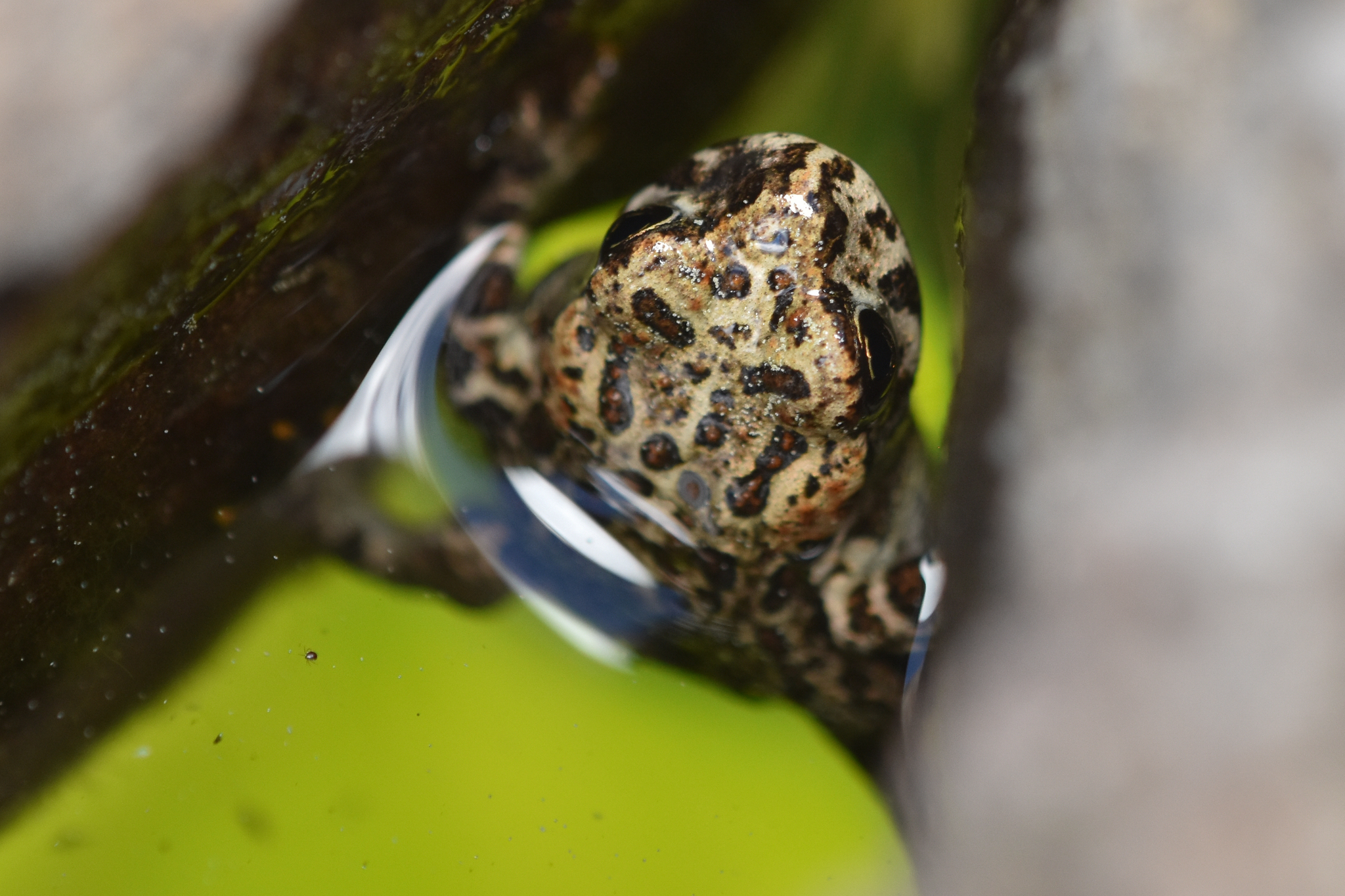In Our Backyard: Western Toad

The Western toad (Anaxyrus boreas), a stout, warty amphibian with an unassuming presence, is a vital resident of the Thompson-Nicola region. Unlike some of its more common counterparts, this toad is a keystone species in local ecosystems, often serving as both predator and prey and a crucial indicator of environmental health.
Medium-sized and typically reaching up to 12 centimetres long, Western toads are easy to recognize by the pale stripe running down the centre of their back and their dry, bumpy skin, which ranges from olive-green to brown or reddish-brown. Unlike frogs, which leap, toads generally walk or make short hops. They are also nocturnal, becoming most active in the evening as they forage quietly through forests, grasslands, and wetlands.
Distribution
In British Columbia, Western toads have a wide distribution but their populations are fragmented and declining in many areas. In the Thompson-Nicola, they thrive in a range of habitats, including moist forests, grasslands, and riparian zones. Their presence is most noticeable in the spring, when adults gather in large numbers at breeding ponds in wetlands, lakeshores, and slow-moving streams.
Toads spend much of their lives on land, often wandering far from their breeding sites. Each spring they return to shallow waters to reproduce, where long strings of eggs hatch into tadpoles. These tadpoles sometimes form dense, wriggling masses that number in the thousands. Such gatherings are a striking sight and also an important link in the food web, providing nourishment for birds, fish, and other wildlife. Although present in the Thompson-Nicola, their patchy distribution means that spotting one often feels like a special reminder of the health of local wetlands.
Threats
The Western toad is listed as a Species of Special Concern under Canada’s Species at Risk Act (SARA) and is Yellow-listed in British Columbia. Populations are facing significant declines across much of their range.
One of the most pressing challenges is habitat loss and fragmentation. As wetlands are drained for agriculture, riparian areas altered for development, or forests logged, toads lose both the ponds they need for breeding and the surrounding terrestrial habitats where they feed and shelter. Because they depend on both land and water to complete their life cycle, the loss of either can have severe consequences.
Road mortality is another serious concern. Each year, thousands of adults and newly transformed juveniles attempt to cross roads during seasonal migrations. These movements often coincide with busy travel periods, leading to heavy losses that can devastate local populations.
Climate change further compounds these pressures. Shifts in rainfall and snowmelt patterns can alter the depth and duration of breeding ponds, sometimes drying them before tadpoles fully develop. Warmer temperatures may also change the timing of migrations, exposing toads to greater risks from traffic or predation.
Disease adds another layer of risk. Chytridiomycosis, a fungal infection that has caused massive amphibian declines worldwide, is known to affect Western toads. While not all populations are equally vulnerable, outbreaks can cause sudden and dramatic losses.
Finally, pesticide and herbicide use poses a quieter but ongoing threat. Chemicals applied to crops, roadsides, or lawns can wash into wetlands, contaminating breeding ponds and affecting both adults and tadpoles. With their permeable skin, amphibians are especially sensitive to toxins in their environment.
Taken together, these pressures place the Western toad in a precarious position. While the species remains relatively widespread in British Columbia, local populations can disappear quickly if multiple threats converge.
Conservation
Across British Columbia, a range of conservation efforts are underway to protect Western toads and the habitats they depend on. Some projects focus on safeguarding and restoring breeding wetlands, while others involve creating new ponds to provide secure places for reproduction. In certain areas, fencing and specially designed underpasses, known as toad tunnels, have been installed to guide migrating toads safely beneath roads. Efforts are also being made to reduce pesticide and herbicide use near wetlands and riparian areas, while maintaining ecological connections between forests, grasslands, and waterways ensures that toads can move freely across the landscape rather than being trapped in small, isolated populations.
In the Thompson-Nicola, community participation adds an important layer of support. Local monitoring of breeding sites and migration routes provides valuable information for scientists and land managers, while also raising awareness of the challenges amphibians face. These initiatives help connect people to the landscapes around them and foster a sense of shared responsibility for the region’s wildlife.
Taken together, these local and province-wide efforts show how science, stewardship, and community action can work hand in hand. Protecting Western toads not only helps ensure the survival of a single species, but also safeguards the wetlands, forests, and grasslands that support biodiversity and sustain the ecological health of the Thompson-Nicola.
